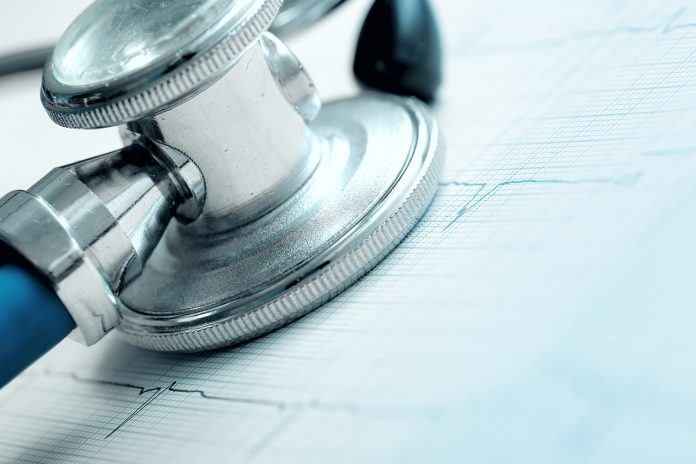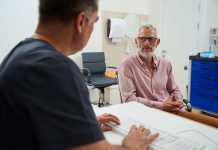Lead Scientist EMEA, Mirko De Melis, Ph. D sheds light on cardiovascular disease detection research and prevention methods
Cardiovascular disease (CVD) includes pathology of the heart and of the vessels (mainly arteries) supplying blood to organs and tissues from the heart. It primarily encompasses diseases of the arteries directing blood to the brain. CVD and their risk factors are the major contributors to global morbidity and mortality. They are responsible for over 17.6 million deaths per year worldwide, representing 31% of all global deaths. Early cardiovascular disease detection for individuals at risk allows early intervention to delay, halt or reverse the pathological process.
Assessment of arterial stiffness by measurement of carotid-femoral pulse wave velocity (PWV), as surrogate for aortic stiffness, is included in the latest guidelines for cardiovascular risk prediction in patients with hypertension and there is ample evidence that arterial stiffness is the strongest known biomarker for cardiovascular risk in general, with predictive power above and beyond all known conventional risk factors.
Early identification of arterial stenosis and heart dyssynchrony can be used to improve CVD risk classification. However, no tools are available today to screen a large population under primary care for these indicators. Individuals who are considered to be at low or moderate risk too often remain undiagnosed.
Over the past few years, the Universiteit Gent (UGent) and Queen Mary University of London (QMUL) and others have gathered evidence that mechanical vibrations induced by cardiovascular dynamics actually propagate up to skin level, where they can be detected using non-invasive contact or non-contact measurements such as laser Doppler vibrometry.
A laser Doppler vibrometer (LDV) is an instrument that is used to make non-contact vibration measurements of a surface. The laser beam from the LDV is directed at the surface of interest. Vibration amplitude and frequency are extracted from the Doppler shift of the reflected laser beam frequency due to the motion of the surface. Three approaches are followed to use LDV for cardiovascular risk assessment:
Targeting the skin overlying an artery enables detection of skin vibrations induced by the flow in the artery. A stenosis in the artery will induce instabilities in the flow, change the flow pattern and thereby change the frequency spectrum of the vibration propagating to the skin level.
Targeting two adjacent points on the skin overlying an artery enables measurement of the time it takes the pulse wave to travel between these two points, from which the pulse wave velocity at that specific location can be derived.
Targeting the chest allows for detection of skin vibrations induced by the heart pumping action. Dyssynchrony will change the vibration pattern.
Overall objectives
Under the leadership of Medtronic, the objective of CARDIS is to investigate and demonstrate the concept of a mobile, low-cost CVD screening device based on a silicon photonics integrated laser vibrometer (see figure 1, panel A & panel B) and to validate the concept for the screening of arterial stiffness, detection of stenosis and heart dyssynchrony. It will be met by:
Investigating, designing and fabricating optical subsystems and components:
- A photonic integrated chip, with a multi-branch laser interferometer with integrated photodetectors and input port for an external micro-optical laser assembly;
- A micro-optical laser assembly;
- A micro-optical lens system.
Integrating the subsystems and building a multi-beam laser Doppler vibrometer. Two rows of 6 beams are envisaged.
Developing a process flow scalable to high volumes for all subsystems and their integration steps.
Investigating and developing experimental and computational biomechanical models to translate optical signals related to skin-level vibrations into underlying CVD physiological events.
Validating the system in a clinical setting.
Progress beyond the state of the art and expected potential impact
With Medtronic, SIOS, imec, Tyndall-UCC, the Universiteit Gent, Queen Mary University of London, INSERM and the Universiteit Maastricht, CARDIS is partnering European leaders in respectively medical devices, laser interferometers, silicon photonics and arterial biomechanics. CARDIS will help to secure their leadership by developing a new application that advances the existing background.
The possibility for earlier detection of risk for CVD makes it possible to start earlier treatment. In these early stages of the disease, this could be achieved simply by a change in lifestyle and/or relatively cheap cholesterol-lowering drugs. Thus, more complicated treatments, like stenting and ultimately cerebral and myocardial infarction may be prevented.
CARDIS will enable Medtronic to enter a new market segment and extend its diagnostic business, currently focused on Implantable Cardiac Monitors. SIOS is a growing company and the project will enable them to enter the medical market.
The new knowledge and expertise developed by imec, UGent, Tyndall-UCC and QMUL in CARDIS will be made available to EU companies in the medical diagnostics market and other markets. It will be used to bring integrated photonics to the next level, opening its use to all kind of applications. It is the corporate mission of these institutions to transfer technology to industrial partners, thus creating a significant economic and societal impact.
Please note: this is a commercial profile
Mirko De Melis, Ph. D
Lead Scientist EMEA,
Patient Monitoring & Diagnostics
Medtronic
Bakken Research Center,
research & technology department
Endepolsdomein 5, 6229 GW,
Maastricht, Netherlands
Tel: +31 433 566 837











